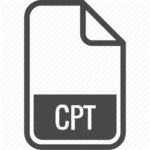What is a CTA?
A CT angiography (CTA) scan is a type of medical test that combines a CT scan with an injection of a special dye to produce pictures of blood vessels and tissues in a part of your body. The dye is injected through an intravenous (IV) line started in your arm or hand.
A computerized tomography scan, or CT scan, is a type of X-ray that uses a computer to make cross-sectional images of your body. The dye injected to perform CT angiography is called a contrast material because it “lights up” blood vessels and tissues that are being studied.
A CTA can be done of the vessels in the head, neck, chest, abdomen, and extremities. A runoff CTA can be done to watch flow of contrast from chest area all the way down to the toes.
Why do I need a CTA?
A CTA may be ordered:
- To find an aneurysm(a blood vessel that has become enlarged and may be in danger of rupturing)
- To find blood vessels that have become narrowed by atherosclerosis(fatty material that forms plaques in the walls of arteries)
- To find abnormal blood vessel formations inside your brain
- To identify blood vessels damaged by injury
- To find blood clots that may have formed in your leg veins and traveled into your lungs.
- To evaluate a tumor that is fed by blood vessels
Information from CT angiography may help prevent a stroke or a heart attack. This type of test may also help your healthcare provider plan cancer treatment or prepare you for a kidney transplant. Your healthcare provider may have other reasons for ordering this test.
How do I prepare for a CTA?
The medical staff will need to know if you have any metal (foreign or surgical) in your body, because CT uses ionizing radiation and metal may obscure certain anatomy.
If you’re wearing anything that contains metal that is in or around the area of concern, you will be asked to remove it.
Tell the medical staff if you’re pregnant. Radiation can potentially pose harm to the fetus. Your doctor will decide on a risk vs benefit basis whether you should have a CT when you are pregnant.
How is a CT performed?
The technologist begins by positioning you on the CT exam table, usually lying flat on your back. Straps and pillows may be used to help you maintain the correct position and remain still during the exam.
An automatic injection pump connected to the IV will inject contrast material at a specified rate. During scanning, the table will move in and out of the machine and images will be acquired while the contrast is moving through your vessels. A single scan takes approximately one to two minutes, but multiple scans may be required.
You may be asked to hold your breath during the scanning. Any motion, including breathing and body movements, can lead to artifacts on the images.
Once images are obtained, the IV will be removed and the injection site bandaged.
What happens after my CT?
After the test, you can get dressed and leave the testing facility.
A radiologist will analyze your CT images and provide your doctor with the results. Next steps will depend on whether the results revealed anything unusual or discovered the cause of any abnormalities.




